In the automotive world, the competition can be fierce, even within the same brand. Peugeot, a name synonymous with innovation and quality, offers a range of vehicles that cater to various needs and preferences. This article aims to compare two upcoming models from Peugeot—one a compact High Roof Wagon and the other a versatile Bus model. We will delve into the technical aspects and innovations that define these vehicles in the 2024 lineup.
Peugeot Rifter vs Peugeot Traveller – Differences & prices compared
Both models have their strengths – but which one suits you more?
Compare performance, efficiency, price and space directly: Peugeot Rifter or Peugeot Traveller?
Peugeot High Roof Wagon: Versatility Meets Efficiency
The Peugeot High Roof Wagon is designed to provide a robust combination of space, comfort, and efficiency. Available with multiple engine types including electric, petrol, and diesel, this model boasts versatility suitable for both families and professionals.
The electric variant of the High Roof Wagon operates with impressive figures, featuring a power output of 136 HP and a torque of 270 Nm. It offers an electric range of up to 340 km, positioning it as an excellent choice for eco-conscious consumers. Meanwhile, the petrol and diesel options provide a range of horsepower from 102 to 130 HP, ensuring that drivers have adequate power for various driving conditions.
Fuel Efficiency and Performance
This model stands out with its efficient fuel consumption rates that range between 5.4 to 7.0 L/100km for petrol and diesel engines, while the electric variant consumes 19.1 kWh/100km. The acceleration from 0-100 km/h ranges from a brisk 10.8 seconds to 13.6 seconds depending on the engine type, ensuring responsive performance for everyday use.
Dimensions and Practicality
With a length of up to 4755 mm and a trunk capacity of 1050 L, the High Roof Wagon provides ample space for passenger comfort and cargo needs. The model offers configurations for 5 or 7 seats, catering perfectly to family outings or professional commitments.
Peugeot Bus: The Road Warrior
On the other side, the Peugeot Bus serves as a powerhouse for larger groups and commercial uses. This model offers a durable build with a width of 1920 mm and a height of 1890 mm, ensuring it commands attention on the road. Its engine lineup comprises both diesel and electric options, with power ranging from 136 to 177 HP and torque figures reaching up to 400 Nm.
Electric Range and Fuel Consumption
The bus variant excels in fuel efficiency with consumption figures hovering around 7.3 to 7.5 L/100 km for diesel engines. Electric versions consume approximately 24.3 kWh/100 km, with an electric range extending to 351 km, making it a reliable choice for urban transport and longer journeys alike.
The Bus can accelerate from 0-100 km/h in between 10.6 to 14.2 seconds, providing adequate power for city and highway driving conditions. It achieves a top speed of 185 km/h, ideal for intercity travel.
Comfort for Passengers
With seating for 8, the Peugeot Bus allows for diverse applications—from family road trips to commuter transportation. Trunk capacities of up to 2011 L ensure that passengers can bring ample luggage or equipment, enhancing its practicality for various uses.
Conclusion: The Best of Peugeot
Comparing the High Roof Wagon and the Bus reveals how Peugeot caters to a wide spectrum of automotive needs. Both vehicles uphold the brand's reputation for innovation while offering unique advantages tailored to distinct customer demands. Whether you need a spacious and efficient family vehicle or a robust transport solution for larger groups, Peugeot's latest offerings in 2024 promise to deliver quality and performance that stands the test of time.
Here’s where it gets real: The technical differences in detail
Costs and Efficiency:
Looking at overall running costs, both models reveal some interesting differences in everyday economy.
Peugeot Rifter has a convincingly advantage in terms of price – it starts at 23800 £, while the Peugeot Traveller costs 34800 £. That’s a price difference of around 11005 £.
Fuel consumption also shows a difference: Peugeot Rifter manages with 5.60 L and is therefore clearly perceptible more efficient than the Peugeot Traveller with 7 L. The difference is about 1.40 L per 100 km.
In terms of energy consumption, the advantage goes to the Peugeot Rifter: with 18.30 kWh per 100 km, it’s noticeable more efficient than the Peugeot Traveller with 24.30 kWh. That’s a difference of about 6 kWh.
As for range, the Peugeot Traveller performs barely noticeable better – achieving up to 351 km, about 12 km more than the Peugeot Rifter.
Engine and Performance:
Power, torque and acceleration say a lot about how a car feels on the road. This is where you see which model delivers more driving dynamics.
When it comes to engine power, the Peugeot Traveller has a clearly perceptible edge – offering 180 HP compared to 136 HP. That’s roughly 44 HP more horsepower.
In acceleration from 0 to 100 km/h, the Peugeot Traveller is barely noticeable quicker – completing the sprint in 10.60 s, while the Peugeot Rifter takes 10.80 s. That’s about 0.20 s faster.
In terms of top speed, the Peugeot Traveller performs hardly perceptible better – reaching 185 km/h, while the Peugeot Rifter tops out at 184 km/h. The difference is around 1 km/h.
There’s also a difference in torque: Peugeot Traveller pulls distinct stronger with 400 Nm compared to 300 Nm. That’s about 100 Nm difference.
Space and Everyday Use:
Cabin size, boot volume and payload all play a role in everyday practicality. Here, comfort and flexibility make the difference.
Seats: Peugeot Traveller offers to a small extent more seating capacity – 8 vs 7.
In curb weight, Peugeot Rifter is distinct lighter – 1561 kg compared to 1953 kg. The difference is around 392 kg.
In terms of boot space, the Peugeot Traveller offers significantly more room – 2011 L compared to 1050 L. That’s a difference of about 961 L.
In maximum load capacity, the Peugeot Rifter performs slight better – up to 3500 L, which is about 200 L more than the Peugeot Traveller.
When it comes to payload, Peugeot Traveller to a small extent takes the win – 914 kg compared to 814 kg. That’s a difference of about 100 kg.
Who comes out on top?
Overall, the Peugeot Traveller shows itself to be wins the duel decisively and secures the title of DriveDuel Champion.
It convinces with the more balanced overall package and proves to be the more versatile choice for everyday use.
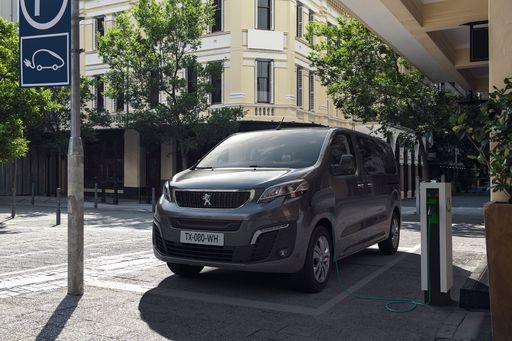 @ Peugeot / Stellantis Media
@ Peugeot / Stellantis Media
Peugeot Traveller
Peugeot Rifter
The Peugeot Rifter is a practical, family-friendly people carrier that makes everyday errands and weekend escapes feel effortless thanks to its airy cabin and clever, flexible interior. With chunky, purposeful styling and storage solutions everywhere, the Rifter manages to be both unashamedly useful and unexpectedly likeable.
details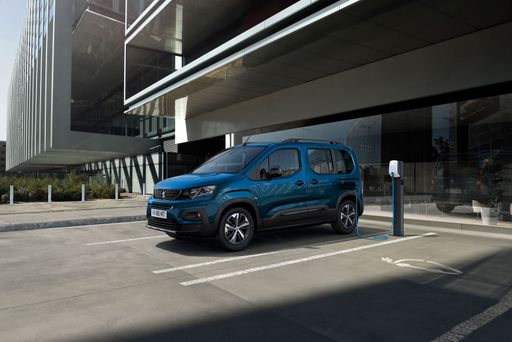 @ Peugeot / Stellantis Media
@ Peugeot / Stellantis Media
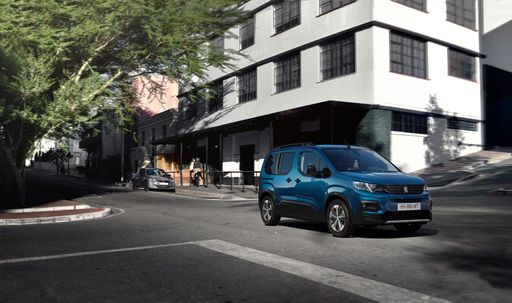 @ Peugeot / Stellantis Media
@ Peugeot / Stellantis Media
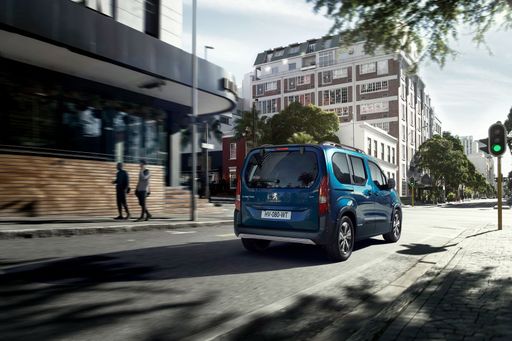 @ Peugeot / Stellantis Media
@ Peugeot / Stellantis Media
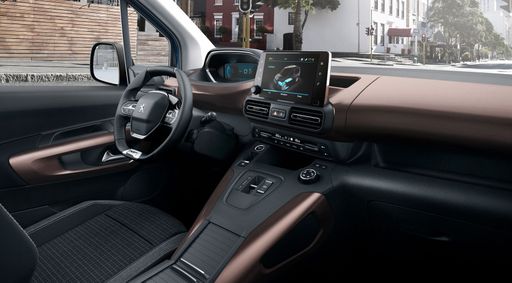 @ Peugeot / Stellantis Media
@ Peugeot / Stellantis Media
Peugeot Traveller
The Traveller captivates with its refined blend of comfort and versatility, making it an ideal choice for both family adventures and professional needs. Its spacious interior accommodates a remarkable range of passenger and cargo configurations, ensuring flexibility for any journey. With an emphasis on safety and modern features, the Traveller delivers a remarkable driving experience that caters to diverse lifestyles.
details @ Peugeot / Stellantis Media
@ Peugeot / Stellantis Media
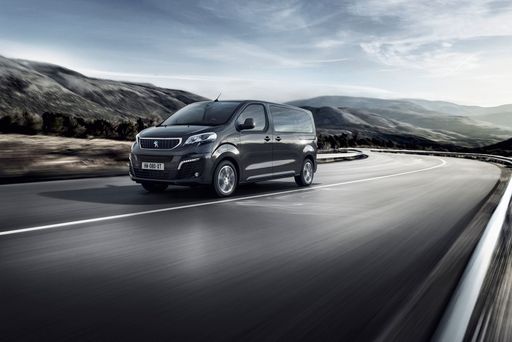 @ Peugeot / Stellantis Media
@ Peugeot / Stellantis Media
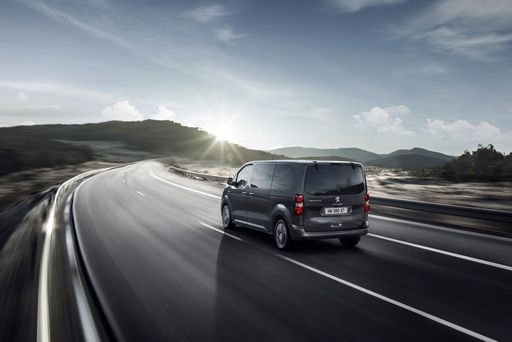 @ Peugeot / Stellantis Media
@ Peugeot / Stellantis Media
 @ Peugeot / Stellantis Media
@ Peugeot / Stellantis Media
 @ Peugeot / Stellantis Media
@ Peugeot / Stellantis Media
|
 @ Peugeot / Stellantis Media
@ Peugeot / Stellantis Media
|
|
|
|
Costs and Consumption |
|
|---|---|
|
Price
23800 - 36600 £
|
Price
34800 - 52200 £
|
|
Consumption L/100km
5.6 - 6 L
|
Consumption L/100km
7 - 7.1 L
|
|
Consumption kWh/100km
18.3 - 19.1 kWh
|
Consumption kWh/100km
24.3 - 25 kWh
|
|
Electric Range
328 - 339 km
|
Electric Range
217 - 351 km
|
|
Battery Capacity
-
|
Battery Capacity
-
|
|
co2
0 - 158 g/km
|
co2
0 - 188 g/km
|
|
Fuel tank capacity
50 L
|
Fuel tank capacity
70 L
|
Dimensions and Body |
|
|---|---|
|
Body Type
High Roof Estate
|
Body Type
Bus
|
|
Seats
5 - 7
|
Seats
8
|
|
Doors
4 - 5
|
Doors
5
|
|
Curb weight
1561 - 1941 kg
|
Curb weight
1953 - 2240 kg
|
|
Trunk capacity
322 - 1050 L
|
Trunk capacity
1624 - 2011 L
|
|
Length
4405 - 4755 mm
|
Length
4983 - 5333 mm
|
|
Width
1848 mm
|
Width
1920 mm
|
|
Height
1818 - 1837 mm
|
Height
1890 mm
|
|
Max trunk capacity
3000 - 3500 L
|
Max trunk capacity
2700 - 3300 L
|
|
Payload
489 - 814 kg
|
Payload
850 - 914 kg
|
Engine and Performance |
|
|---|---|
|
Engine Type
Electric, Diesel
|
Engine Type
Electric, Diesel
|
|
Transmission
Automatic, Manuel
|
Transmission
Automatic
|
|
Transmission Detail
Reduction Gearbox, Manual Gearbox, Automatic Gearbox
|
Transmission Detail
Reduction Gearbox, Automatic Gearbox
|
|
Drive Type
Front-Wheel Drive
|
Drive Type
Front-Wheel Drive
|
|
Power HP
102 - 136 HP
|
Power HP
136 - 180 HP
|
|
Acceleration 0-100km/h
10.8 - 13.6 s
|
Acceleration 0-100km/h
10.6 - 14.2 s
|
|
Max Speed
132 - 184 km/h
|
Max Speed
130 - 185 km/h
|
|
Torque
250 - 300 Nm
|
Torque
270 - 400 Nm
|
|
Number of Cylinders
4
|
Number of Cylinders
4
|
|
Power kW
75 - 100 kW
|
Power kW
100 - 132 kW
|
|
Engine capacity
1499 cm3
|
Engine capacity
2184 cm3
|
General |
|
|---|---|
|
Model Year
2024
|
Model Year
2024 - 2025
|
|
CO2 Efficiency Class
A, E, F
|
CO2 Efficiency Class
A, G
|
|
Brand
Peugeot
|
Brand
Peugeot
|
What drivetrain options does the Peugeot Rifter have?
The Peugeot Rifter is offered with Front-Wheel Drive.
The prices and data displayed are estimates based on German list prices and may vary by country. This information is not legally binding.
